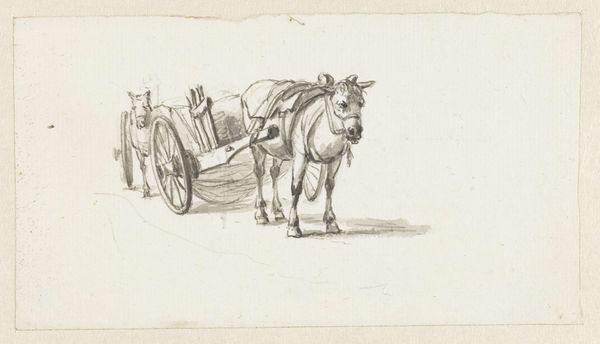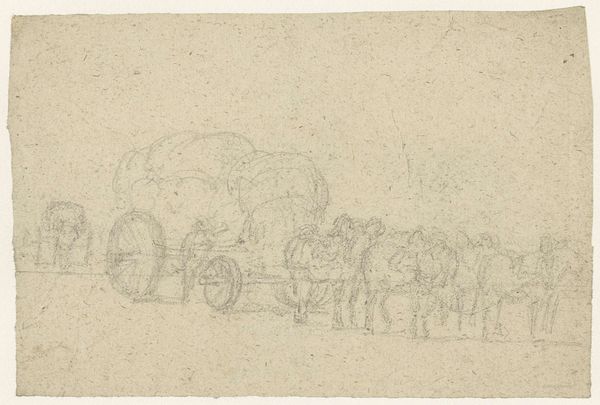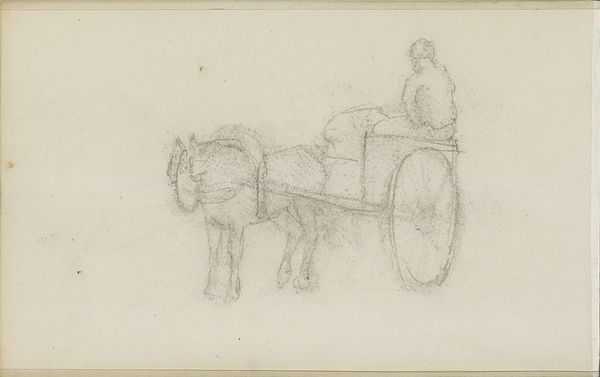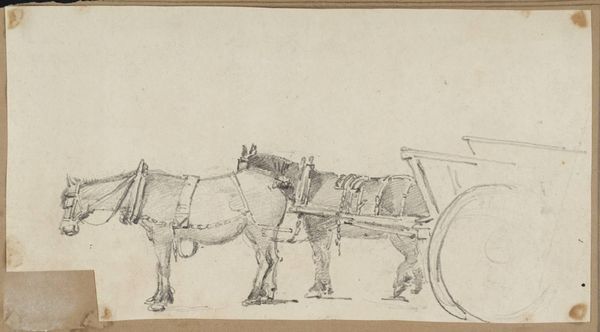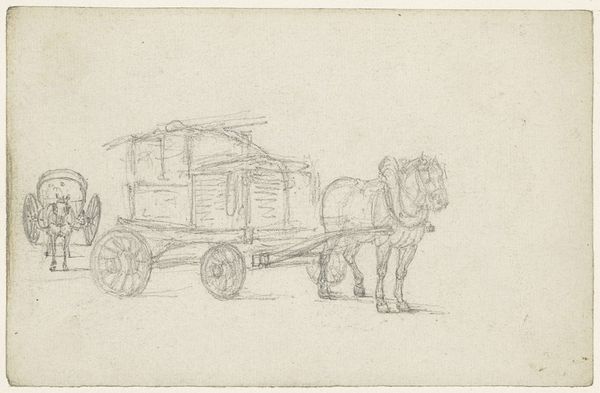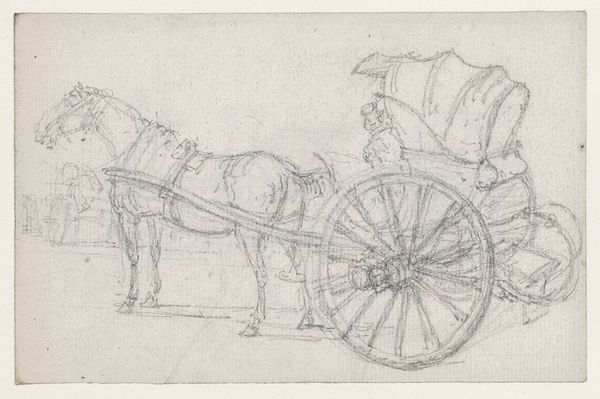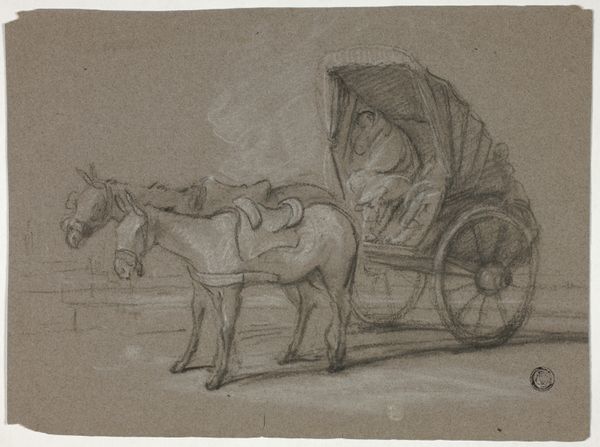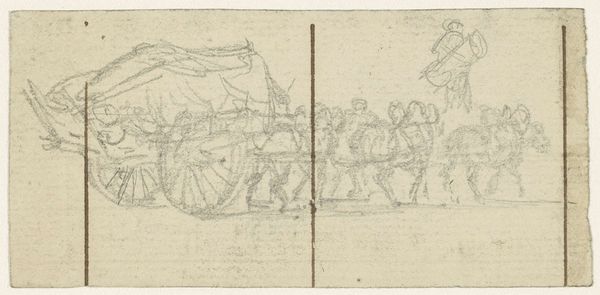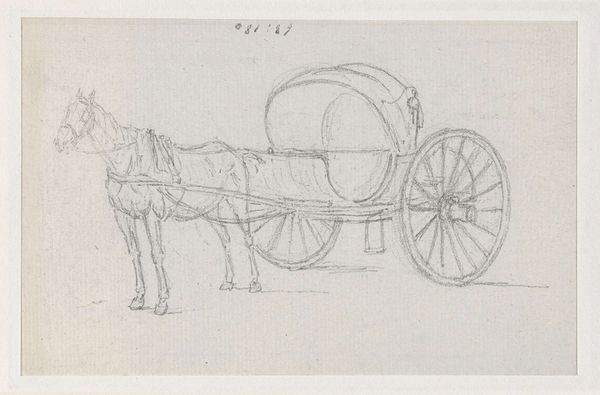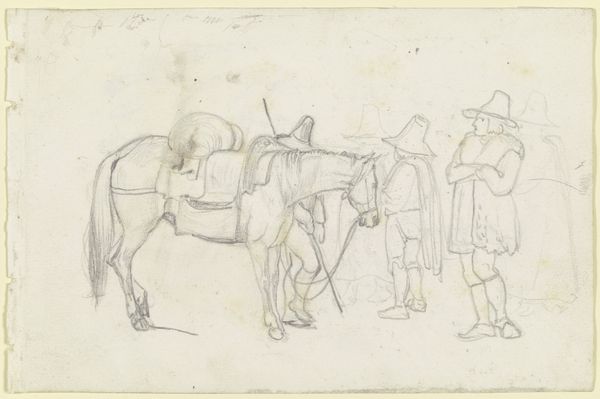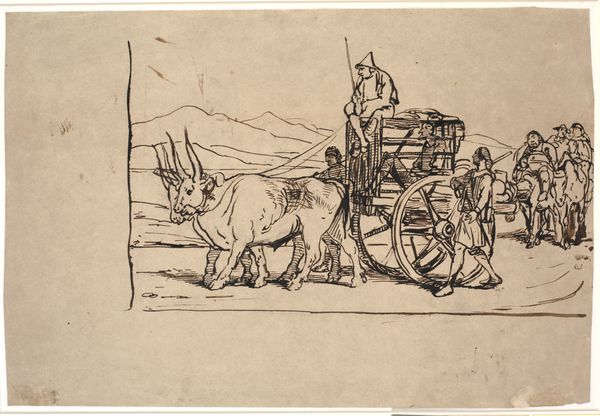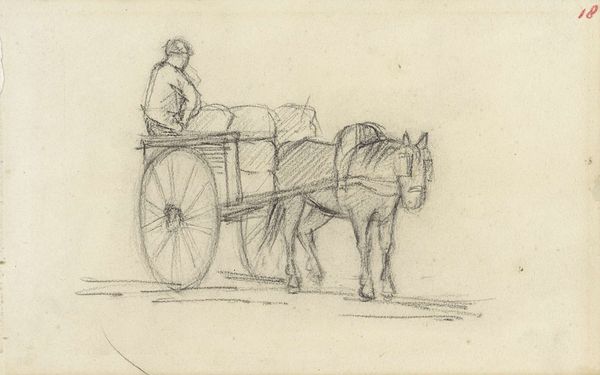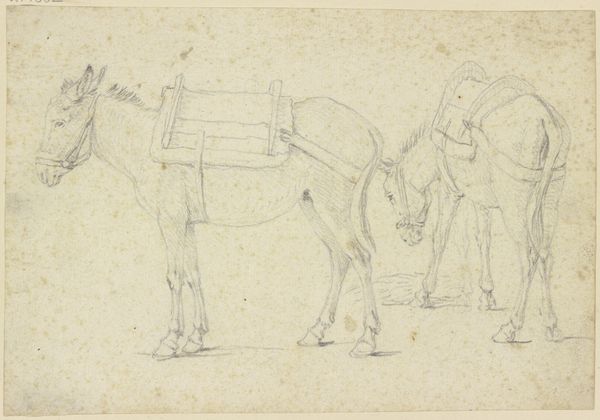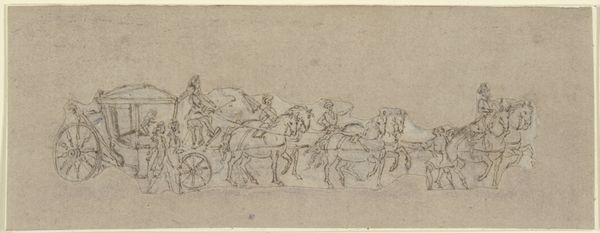
drawing, pencil
drawing
landscape
figuration
pencil
line
realism
Dimensions: height 95 mm, width 140 mm
Copyright: Rijks Museum: Open Domain
Editor: This drawing, "Sleperskar met twee paarden" by Georges Michel, made sometime between 1773 and 1843, simply shows a horse-drawn cart in pencil. It feels very direct, a sort of study perhaps. What strikes you about this piece? Curator: Immediately, I think of labor, both the physical labor depicted in the drawing itself and the labor of the artist to produce this image using readily available and cheap materials. Notice the roughness of the line, the sketched quality suggesting speed and perhaps a focus on documenting a specific process. Do you see how this work challenges conventional notions of “high art” because it's a sketch of such a common activity? Editor: I see what you mean, it's not trying to be glamorous, that's for sure. More like someone just quickly captured a moment of everyday life. But where do you see the focus on social context that you mentioned? Curator: Think about the social structures reflected in this simple scene. The animals are working, moving goods. The availability of the paper and pencil suggests some level of access to material goods. The drawing speaks to a culture and its resources—what they used to do what. Editor: So you're saying the value of this piece lies not in its aesthetic beauty, but more in what it tells us about the period’s means of production? Curator: Precisely! Consider, too, the choice to depict this particular scene: the reliance on animal labor. It gives insight into the pre-industrial realities, as opposed to idealised paintings of the time. It emphasizes the social and material conditions from which this image emerged. Editor: I never really thought about drawings as that informative. It does seem to show how important it is to consider who made things and the context they were working in. Curator: Exactly. And in turn, how these seemingly simple artifacts give voice to complex socio-economic forces. It is a vital form of historical testimony.
Comments
No comments
Be the first to comment and join the conversation on the ultimate creative platform.
